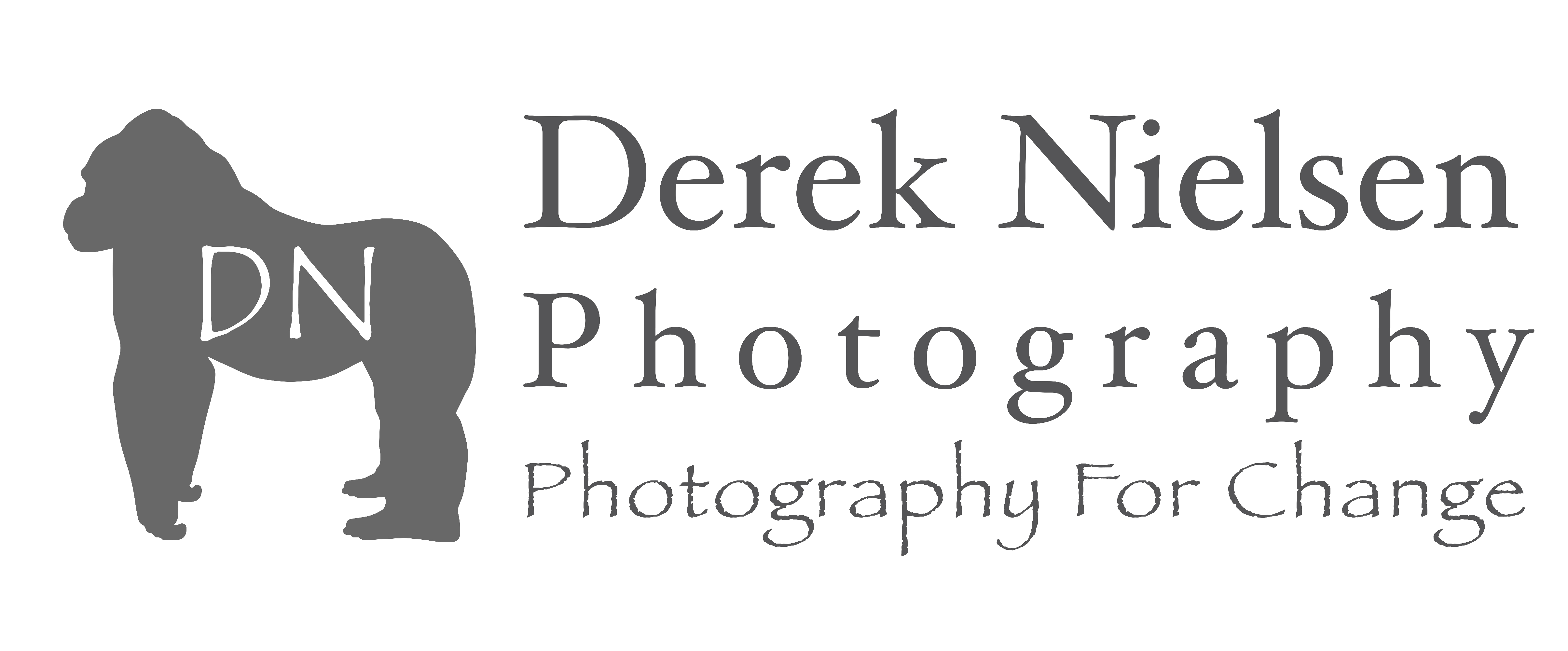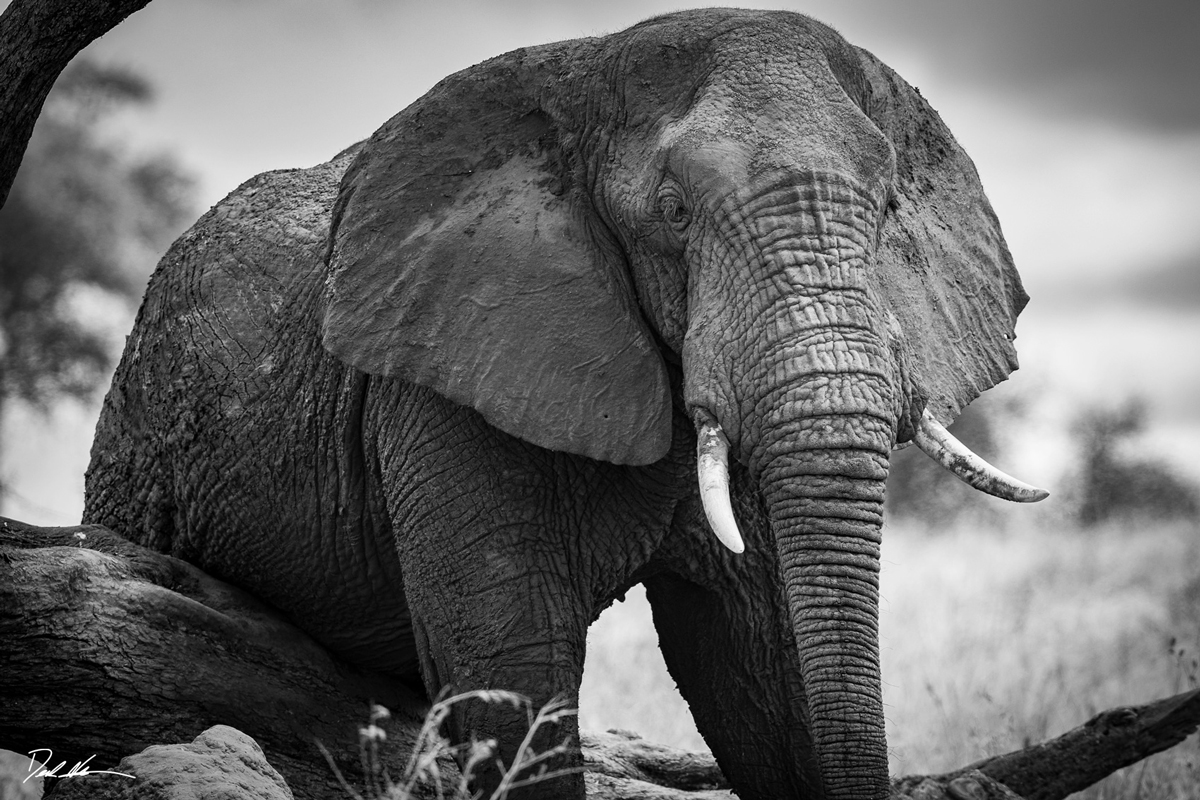
AI Art And Photography
In 1859, French poet and father of modern art criticism Charles Baudelaire, called photography “art’s most mortal enemy,” claiming, “If photography is allowed to supplement art in some of its functions, it will soon have supplanted or corrupted it altogether, thanks to the stupidity of the multitude which is its natural ally.” In fact, many painters saw the invention of the camera as a threat to their livelihood and the debasement of human artistry. Imagine what they’d have to say about AI art and photographic images generated by artificial intelligence?
Everywhere you look, there’s an argument about the ethics or worth of AI art or someone telling you to be afraid because robots are coming for your creative job. But AI Art and photography are here to stay whether we like it or not. As the algorithms powering AI engines get more sophisticated, so do the images they’re capable of producing and their potential applications.
Obviously, despite Baudelaire’s dour opinion, photography has thrived, evolved, and developed into an incredible fine art form in its own right.
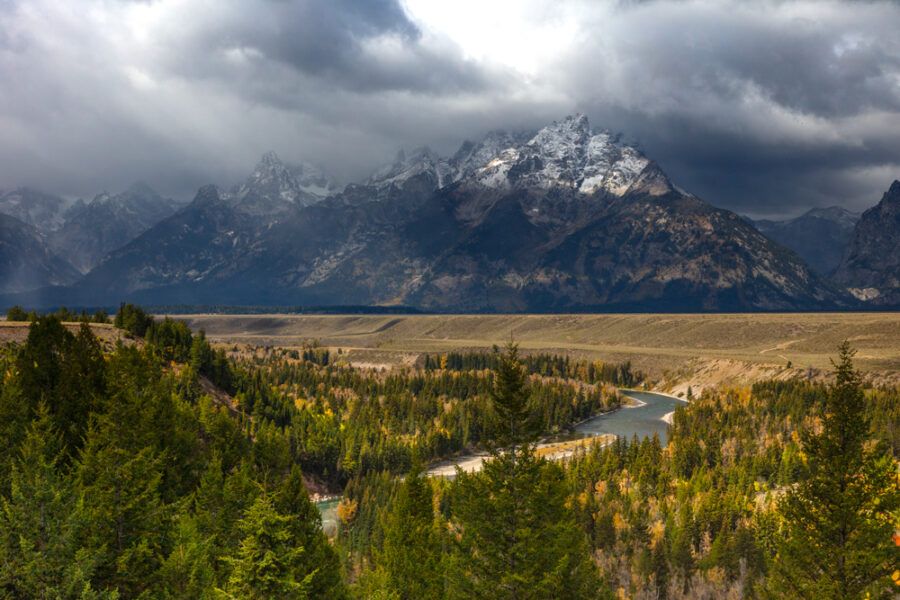
(The Mountains Call – Fine Art Image Of 50 – Derek Nielsen Photography)
The establishment will always be wary of change, human anxiety will always be triggered by the unknown, and the self-appointed arbiters of taste will argue over whether art is real or fake good or bad, until the end of time.
When I first fell in love with photography about 20 years ago, film was still the industry standard for excellence, but it wasn’t long before digital cameras were capable of producing images as good or better than a film cameras. I distinctly remember a lot of fear in the industry; people called digital photographers “cheaters”; “not real photographers.”
Is Using Photoshop Cheating?
Graphic designers and digital artists have faced similar stigmas, and now, as AI art and photography become more sophisticated and more omnipresent in our lives, here we are again. Digital photographers and artists call out AI artists as “not real artists,” “cheaters,” and even “thieves.” And the fight goes on and on. Photoshop itself uses AI to assist photographers in using their software to enhance their images. I remember people who didn’t understand photography very well looking at some of my work and saying, “it’s photoshopped.”. Initially, I was annoyed hearing that, but as time went on, 99% of photography is photoshopped. Taking a raw image with a powerful camera comes out grey and unsaturated. It is designed to be processed to preserve the details hidden deep in the file.
Each technological leap has its own unique set of challenges and quandaries unique to that creative form that can often have ramifications well beyond the art world. In the case of AI art and photography, we’re in truly uncharted territory. As the technology to generate a photorealistic image or video outpaces the technology to detect an AI-generated image, problems like deep fakes and misinformation get tangled up with concerns about copyright infringement, theft, or devaluing the work of human artists.
Personally, I admit I don’t love the idea of AI taking my job or being duped with deep fakes. Luckily, knowledge is the antidote to fear. So, let’s dive into this topic a little deeper to better understand what’s really going on. Can my role as someone connecting the world to nature be replaced by an algorithm? What are this nascent technology’s seemingly limitless potential benefits, applications, and potential pitfalls? The answer comes down to transparency. If the artist is upfront with how something was created or captured and the consumer is happy with that, then that is all that matters.
What is AI Art?

(Line Conflict – Fine Art Image Of 6 – Derek Nielsen Photography)
AI art is any visual art or musical composition created by artificial intelligence (AI) software such as text-to-image models or musical generators. The level of creative control may vary depending on the software used and the data quality the AI learns from. To some degree, humans set the parameters, write instructions, or give the software direction. The software works on a set of rules (algorithm) for solving a problem, gathers data from some source then generates an output. In this case, art.
An AI artist’s process involves stringing together a series of word prompts and feeding it into an AI text-to-imaged generator. The challenge lies in figuring out what string of words will generate the best image.
I’ll let Yale Daily News explain:
Artificial intelligence is designed to simulate human intelligence through computer systems. Programmed to synthesize information, recognize patterns and make decisions, these systems can complete tasks associated with human intelligence.
Current AI text-to-image generators like DALL-E 2 or Midjourney are trained to mimic human artistic ability. The generator “learns” a particular style or aesthetic by analyzing datasets containing thousands to millions of images. By understanding the relationships between visual information and their corresponding text descriptions, the system can create its own images in response to text prompts.
The History of AI Art
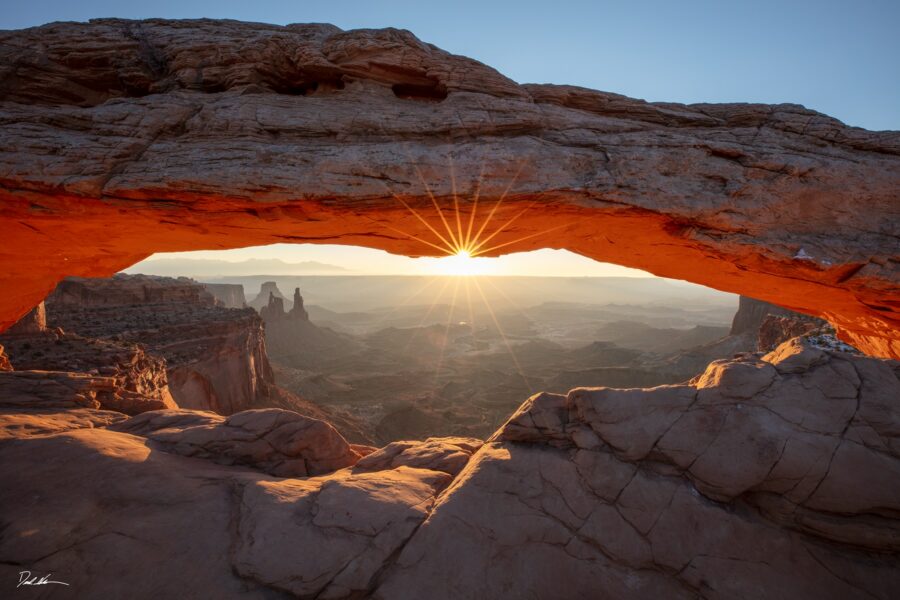
(Sundial – Limited Edition Fine Art Print Of 50 – Derek Nielsen Photography)
AI-generated art is almost as old as computers themselves. In the 50s and 60s, basic algorithms were used to generate simple patterns and shapes rendered on a computer screen. In 1973, the artist Harold Cohen developed a set of algorithms known as AARON designed to allow a computer to be in a “freehand” style. While AARON was programmed to paint specific objects, Cohen soon discovered that some of his commands generated forms he’d never imagined, allowing the machine to make artistic decisions.
By the 70s and 80s, AI was being used more extensively in computer-aided design (CAD). In the 90s, things really picked up speed as AI-generated art spread its wings beyond visual effects. Artists started experimenting with AI to create music, and poetry, and upload AI into robots that could create paintings and sculptures.
Today, we have all that plus image and video generation on an incredible scale. Cosmo released the world’s first magazine cover created using AI last year, a viral image of the Pope in a parka fooled half the planet last month, and AI touches nearly every aspect of our lives, from TikTok filters to shopping for a coffee table on Amazon.
An Expert Perspective:
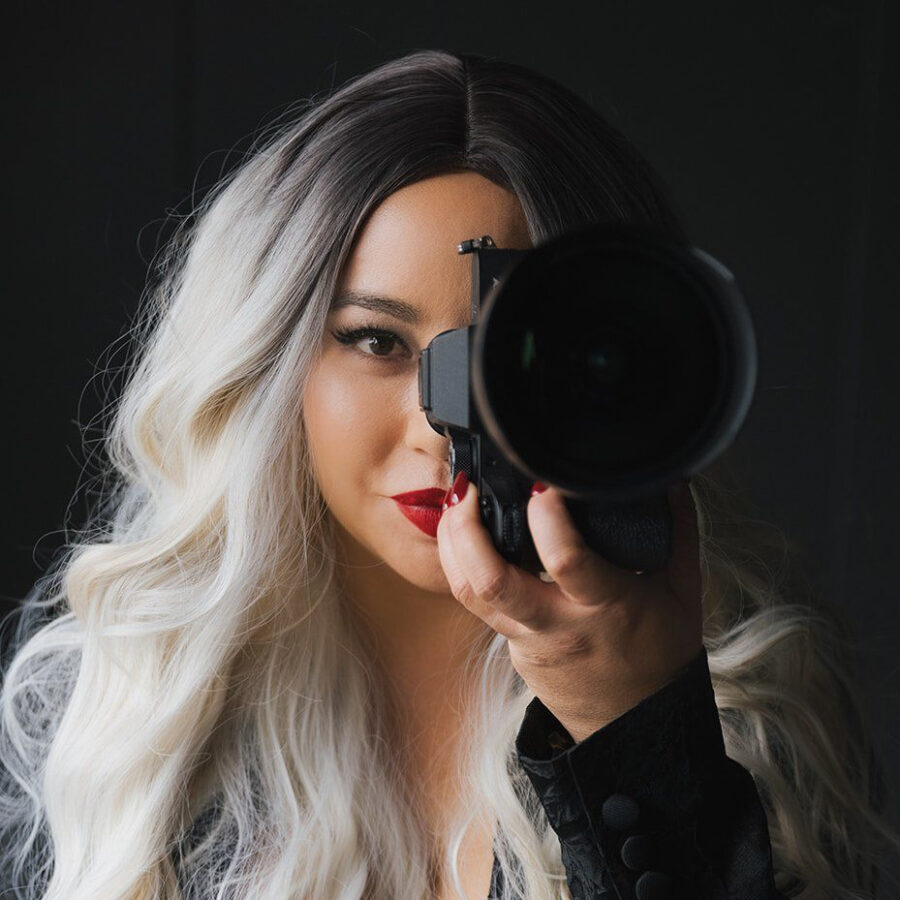
(Artist And Business Owner Rachel Wood)
I reached out to Artverse founder, collector, photographer, and artist Rachel Wood to get some insight into all this from someone who’s both a fellow photographer and deep in the NFT and AI artspace.
Derek: As an artist who’s heavily invested in photography over the past few years, as well as someone who has experience creating AI art, do you feel AI has the potential to replace photography in the fields of digital marketing and advertising in the future?
Rachel: For me, I think no. Maybe for stock images for websites and things like that, emails, newsletters, etc.: all those filler images people don’t take much notice of, yeah, AI is great for that. I mean, if AI art can replace stock images, I would love that because I think it’s such a waste of human artistic license and energy, and it just really discounts the value and the work that goes into stock images. So, that would be awesome.
I think there’s a whole ethical component to AI imagery where people are like, well, is it truthful? Is it trustworthy?
I think that’s why people have always valued photography, because it’s this light painting of real life, of capturing what exists in this world.
So, for marketing, if you’re marketing a product and it’s AI created? That’s false advertising for me. I don’t think anyone would really trust that fully, even if it looks cooler than a photograph. They will not trust something that is generated vs an actual photograph or video that actually shows the real deal even if that photo or video has been manipulated and edited. It’s still that real representation of what truly exists.
So, when you’re thinking about AI in marketing and advertising, it might be more as the backgrounds or the settings or the additional elements that add flourishes to it, but it won’t be, or shouldn’t be, the main event.
I also wanted to point out that the term AI photography is such a misleading term. Calling a photorealistic image created by AI photography is like calling a painting of a photograph, a photograph. Photography is light painting with a sensor.
There’s a new technology called the Synograph that uses 3D printing to create a fully textured reproduction of an artwork on canvas, but we wouldn’t call that a painting either.
The tech is very different which means the product is different even if the result looks similar.
Derek: How can photographers use AI art to help their business?
Rachel: Artists can absolutely use AI in their businesses, kind of like what automation has done for businesses all around the world. It has given people the ability to handle daily tasks that had previously taken so much of our time. It has shortened that time frame so that we can scale up or just do more of what we love. For me, as a full-time artist, many of us are just constantly overwhelmed by all the little nitty gritty things of marketing ourselves, of writing posts, of writing captions, of putting together reels, of all the social media things that are essentially mindless but geared for that exposure and marketing; that can all be essentially automated and taken care of with AI.
I’ve used AI to write captions. I’ve used AI to structure things that maybe I’m not really great at because organization is not my strong suit, but I’ve used AI to complement and help me shorten the amount of time I spend creating things that aren’t really true to my passion but are needed for running a business. And that is just smart. That’s smart business; it’s being a smart artist and utilizing the tools that are available to me right now for free right now (mostly) to just continue doing what I love. So, if I can shorten the amount of time it takes me to run a business while also being able to scale my business at the same time, I’m gonna do it, and I’m gonna encourage a lot of other artists and photographers out there to pick and choose what sort of AI can help them achieve their business goals.
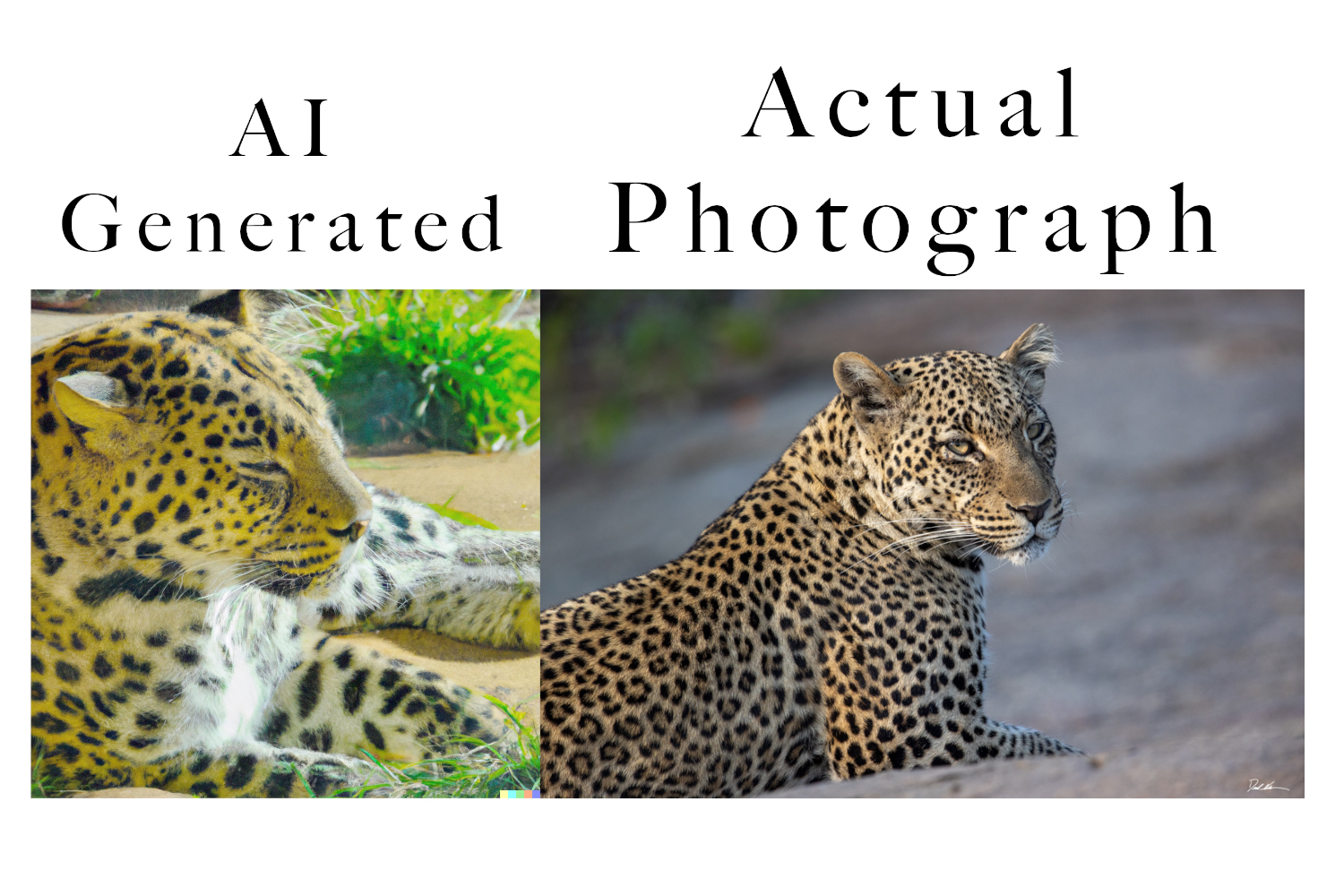
Derek: With many models of AI generation using other artist data/images without permission, do you see copyright lawsuits slowing AI’s progress down the line?
Rachel: I definitely see a huge ethical question on where we draw this line of AI-generating bots pulling from copyrighted material. And whether you agree it should be copyrighted or not, the fact of the matter is that by law, it is, and if someone is copying that, then that’s not okay.
There are certain places like the Empire State Building or the Sydney Opera House that are copyrighted, and if anyone were to try to sell a picture of either one of those, they could get sued. Even though it’s in the public sphere and everyone can go see it, and everyone can take pictures of it, you cannot sell it.
And to me, right now, where the AI tech is right now, I see some major ethical questions and major legal questions that will slow down AI’s progress.
Will people just keep going? Likely, yes, given the history and tendencies of humanity. But I think for those who really want to make their mark and to be heard and be seen as ethical, trustworthy humans using AI technology, not just being used by the technology, it will be a big debate, a big controversy.
It’s not for everyone, but as long as people are open and transparent about what it truly is, I think we can all move forward with the hope things will change for the better because, like I said before, AI is at the very beginning, it’s in its infancy, there are gonna be a lot of growing pains but it’s going to be exponentially sped up.
Derek: What is your favorite part about creating AI art?
Rachel: What I love about creating AI art is that with photography, I’m always creating from what exists; I’m creating from what I can capture in the world. And as you know, Derek, with wildlife, you can’t tell an antelope to just freeze in the middle of a jump or to go back and do it again or change the skies or things like that.
We exist in the world of reality, but with AI, I’ve been able to let go of my need for realism. I’ve been able to let go of my need for perfection and just delve into the world of abstract imagination.
And that has been one of the best parts for me. I’ve been able to get out of creative ruts, I’ve been able to push myself and make new connections using AI, and I’ve been able to reinspire myself to connect with what I really love.
I’m not hindered by the physical limits of my own hand drawings or my travel budget; I can delve into the world of cosmic energy and colors or salt mines in Peru. There really are no limits to what can be created using AI, and for me, that is freeing.
As a professional, though, I use It mostly just to market and have content just to share with people. That’s more personal and representative of me as an artist, but I don’t use it as a professional tool at the moment. Eventually, maybe, but right now, it’s more just about creating, and I think everyone has the capacity to be a creator, and what distinguishes a creator from an artist is the professionalism of their methods and intentions.
Derek: What is something you’ve noticed as a big drawback of using AI art?
Rachel: A big drawback to using AI art, and this is something I’ve noticed within myself, and I’m very conscientious of not doing, is just copying what exists in the world and trying to replicate it with AI.
For example, trying to describe my photographs using AI and then create images based on my photographs.
We are operating in a world of limitless connections and iterations and possibilities, and what I would love to see is people being more intentional about using the technology and not just having the technology use them to really drive forth innovative ideas, to really drive away from the restraints of what we’ve had and push humanity forward. To me, that is something that is not being utilized enough in AI. Ai is this powerhouse, and we aren’t using the power enough for good yet. I would love to see it being used to improve peoples’ lives.
Future Facing:
So where does AI go from here? And where does this place, someone like me? I think I can safely say that I’m not in danger of losing my job to an algorithm anytime soon.
I headed over to DALL-E and asked for a photo of an elephant walking towards the camera, about to cross a river, and honestly, I was impressed. There are more than a few things wrong (and some of my other attempts ranged from hilarious to horrifying), but it’s still an amazing tool.
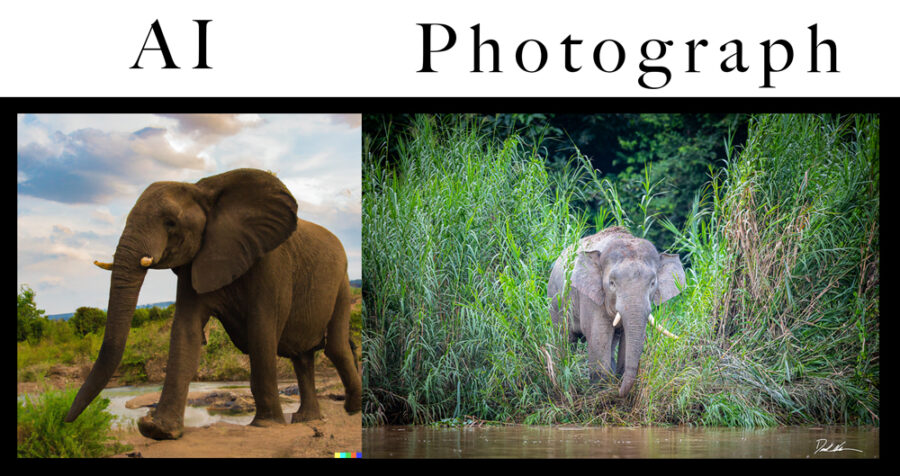
I’m even more impressed by some of the photo-realistic AI imagery I’ve seen created by artists out there who have done this more than once.
Some exciting developments are on the horizon for AI art, some of which tackle ethics concerns head-on. Adobe just unveiled its own image-generating product, Firefly, which will be trained using images exclusively licensed or from its own stock or no longer under copyright. The tool will also go one step further, adding content credentials “like a nutrition label for imaging,” which will identify how each image is created.
But I don’t think there will ever be a substitute for what Rachel calls “light painting” for truly capturing what we see with a camera. Because that’s not just about creating an image, it’s about freezing a moment and capturing an experience in a single frame.
Camera technology will continue to evolve, and I’m always super excited about that, but there’s something both undefinable and undeniably human in the connection between photographer and subject that runs through that lens.
Trekking out into the wild to take a bunch of pictures isn’t a vacation. It’s a journey of discovery, both of the subjects (you never know exactly what you’re going to come back with) and of yourself, that makes the stories behind the photos as special as the photos themselves.
For me, it’s a mission to give a voice to the voiceless and show the reality of what’s happening to our planet and its beautiful creatures.
I’m happy to use any and all tools, artificial or not, that can help me do that because I don’t want to have to use AI to show my grandkids what a blue sky or a black rhino looks like.
JOIN OUR NEWSLETTER AND FOLLOW OUR BLOG
For more information on any of the images or fine art prints in this article or how to fine-tune your nature photography skills, please check out more of our articles. Likewise, if you have enjoyed the photography inside the article, please visit our gallery for more information and a wider selection of luxury fine art photography from around the world. It is my absolute pleasure to share my intimate knowledge of wildlife photography with audiences around the world. All of my fine art images are sold to help support conservation organizations around the globe.
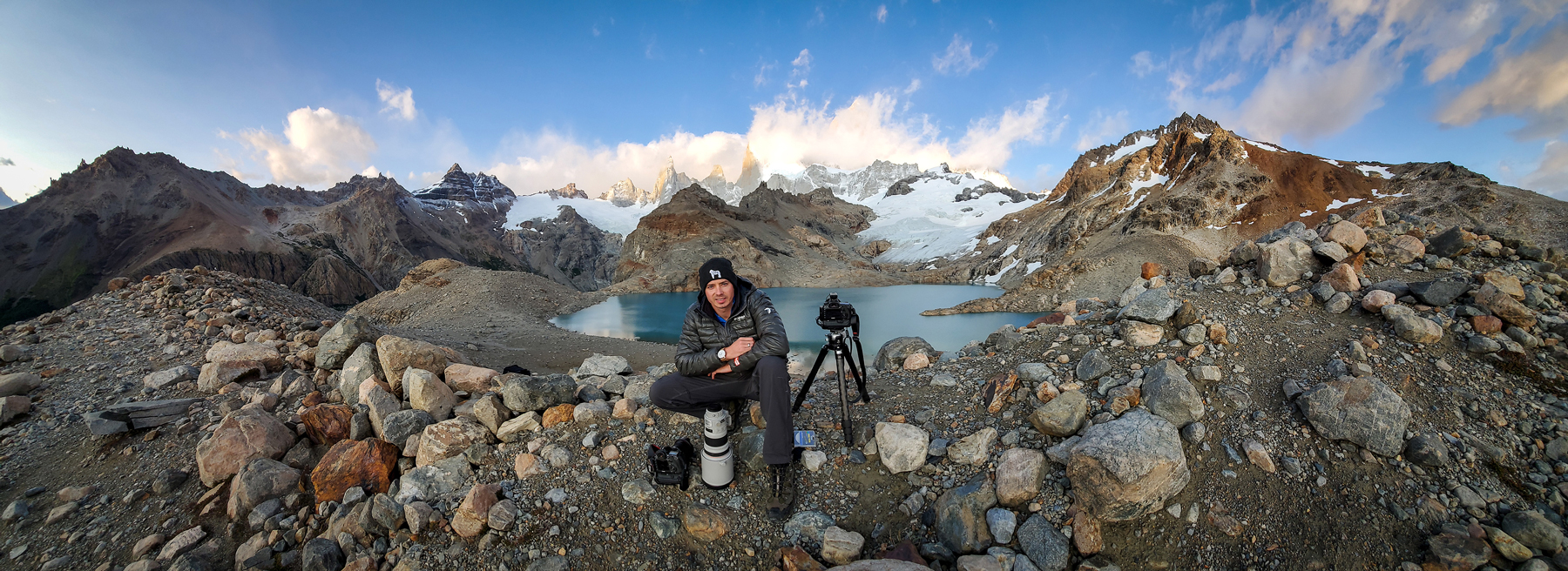
Hello! I'm Derek.
DEREK NIELSEN PHOTOGRAPHY RAISES AWARENESS ABOUT THE GLOBAL NEED FOR CONSERVATION THROUGH PHOTOGRAPHY AND DONATES UP TO 15% OF ALL SALES BACK TO ENVIRONMENTAL ORGANIZATIONS AROUND THE WORLD.
